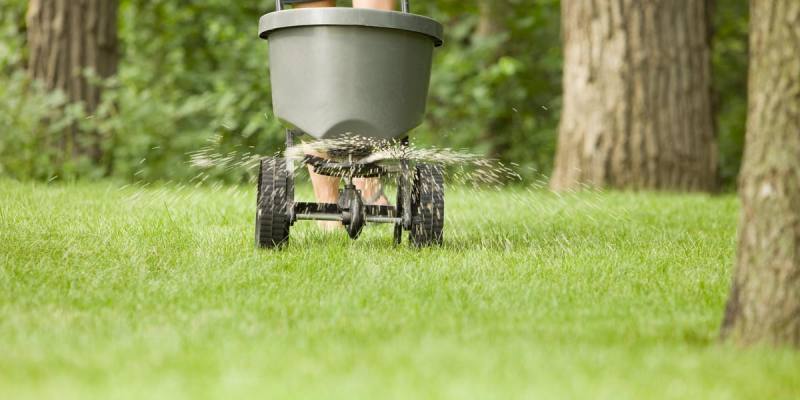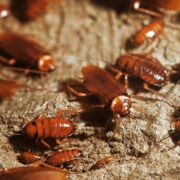If you’ve dealt with lawn care before, you probably know that maintaining your gorgeous dream lawn is not only difficult, but sometimes feels impossible. In addition to watering and cutting the grass regularly, you must constantly manage weeds and deal with pest invasions. Just one week of inactivity can result in a jungle (or a desert). If you’re renting or a landlord, lawn care is often one of the typical services provided by the property management company should handle lawn care via discounted services. But if you’re a homeowner, it’s all up to you, and hiring regular lawn care service can be expensive. Don’t even consider giving up on your lawn – maintaining your yard not only boosts the curb appeal and environment of the home, but it also makes the house less approachable by intruders. If you keep up with lawn maintenance, you won’t have to deal with hundreds of dollars worth of landscaping services or pest control later. Here are the best tips for keeping your lawn in tip-top shape:
Weed Prevention
The first step to minimizing weed growth in your yard is growing full and healthy grass and plants to reduce available space for weeds to grow. Fertilize grass on a regular basis, about every 6 weeks, and apply a seasonal weed preventer to target the most prone weeds. Additionally, you can dethatch and aerate your lawn occasionally to prevent pest infestations and boost the strength of your grass.
One of the most common mistakes made in lawn care is mowing too often. While regular trimming keeps your lawn manageable, consider mowing every other week instead of once a week. As a general rule, don’t mow until your grass is at least one-third above mowing height. You can also leave your grass longer when you mow. These techniques limit the amount of sunlight that reaches the soil, which makes it harder for weeds to sprout. The best mowing height depends on the type of grass, but most grasses thrive between 1 and 3 inches long.
When it comes to watering, grass thrives when watered deeply and less often, compared to shallow, frequent watering. This promotes long root growth, making your grass more resilient, and crowding out weeds.
Weed Removal
Even if you abide by all the weed prevention techniques, those pesky plants will still find their way into your yard. There are many different types of weeds that grow in different climates and seasons, and require different techniques for removal:
Perennial grassy weeds: These grass-like weeds are dormant through the winter and emerge in the spring. A common example is quack grass. Use a generic plant killer to remove perennial weeds individually. Coat each weed with herbicide using rubber gloves and avoid getting the herbicide on other plants.
Annual grassy weeds: These grass-like weeds fully die off during the winter and new growth occurs in spring. A common example is crab grass. In addition to using weed preventers, you can hand pull these weeds when you see them or use a specific herbicide to spot treat patches.
Broadleaf weeds: These weeds have flat leaves and look more like plants than grass. Common examples are thistle, dandelions, and clovers. Use an herbicide pressure sprayer to spot treat these weeds. Alternatively, use a dial or tank sprayer to target large clumps, but be careful not to get broadleaf herbicide on your other plants or grass.
Pest Prevention
Just as with weeds, proper maintenance and preventative techniques can reduce the likelihood of a pest infestation in your yard:
- Eliminate standing water: Fountains, ponds, and puddles are the perfect breeding ground for mosquitos and other insects. Level out your lawn if necessary to avoid excessive pooling during storms, and make sure all decorative fountains have pumps to keep water flowing.
- Keep your yard tidy: Always avoid having junk, debris, or unused items sitting outside for long periods of time. These can quickly become a home for pests. Keep all outdoor furniture stored properly. Don’t let furniture sit in the rain if it is cushioned, keep it covered or move it inside during storms.
- Firewood storage: If you have firewood, it is essential to store it properly. Termites, wasps, and other unwanted guests will quickly make a home out of wood or wooden items. Ensure that your firewood is completely dry and store it above the ground on a shelf or stand in a covered area, ideally, at least 3 feet from any building or you can store it in the outside toy storage.
- Trim the lawn regularly: In addition to preventing weeds, regular trimming will help you to notice pests right away. Maintain at least one foot between the walls of the house and any branches or plants to discourage pests from finding their way indoors.
Pest Removal
When you do encounter a pest infestation, the best course of action is almost always to call a pest control company. They will be able to identify the pest, determine the severity of the infestation, and either treat it or advise you on how to treat it. However, if you are certain that it is just the first sighting of a pest, you can get specific pesticides at a home improvement or gardening center.
First of all, be sure you have properly identified the pest. When it comes to bugs, many pests can look alike, so always get a professional opinion if you aren’t absolutely certain about the species of bug. Most often, you can get a pesticide that targets a group of pests. Most kinds of ants can be killed with a mechanical pesticide like diatomaceous earth. For small mammals like moles and gophers, you can use small traps, but be aware of your local laws concerning trapping animals and always follow the proper procedure and safety precautions.
Lawn and Home Security
Of course, a home security system is the number one way to protect your house and safety, but home security begins in the yard. Here are some of the best outdoor security measures you can take to reduce the attractiveness of your house to potential intruders:
- Hide valuables: Keep expensive items like lawn mowers, sound systems, and grills out of sight to decrease the likelihood of your house being targeted.
- Put up security signs: Whether or not you have a home security system, put up signs in the front yard that say your house is secured. No intruder is interested in calling your bluff. You can also install real, or fake, cameras in obvious locations.
- Install fencing: Enclose your backyard with a solid fence and locked gates. Ideally, opt for a taller fence that can’t be seen through or climbed easily.
- Outdoor lights: Keeping your front and back porch well-lit is essential for deterring intruders. To save energy, invest in motion sensor lights.
- Landscaping: In addition to making your yard beautiful, purposeful landscaping such as planting thorny plants or cacti can make your yard more difficult for intruders to navigate.
The bottom line to lawn care is regular maintenance and TLC. If you remain proactive in maintaining your yard and regularly use these preventative measures, you can save time and money later on, and avoid hiring professional intensive services.










Comments